- Sport & Abenteuer Reisen
- Reise Bausteine
- Trekking Reisen
Overview
This trek starts directly from Old Manali and then goes straight up to the camp. We camp for two nights at the same camp and on the second day we make our way to Lake Rani Sui. This trek offers gigantic views of the entire Kullu Valley and the surrounding mountain peaks. The trek is quite demanding due to its steep ascents and descents.
For those who don’t have much time: This trek is also possible in 2 days, but then we only hike to Lamadug and not to the lake.
Program
Day 1 Old Manali (2100 m) to Lama Dug (2850 m) 5-6 hours
It goes steeply uphill through all vegetation layers of the Himalayas: first through dense coniferous forest, then deciduous forest and later through bushes and over flower meadows. The higher we get, the more beautiful is the view of the Rothang Pass and the Kullu Valley. We reach a clearing at a stream. This is where we camp. (Overnight in the tent) -/L/D
Day 2 Lama Dug to Rani Sui Lake (3900 m), back to Lama Dug 6 hours
Well strengthened after breakfast. it goes further uphill with only a day bag. The flower splendour is getting more and more beautiful! Also the view is getting better: we can see the Indarasan and the Deo Tibba, two six-thousand-meter peaks of the Pir-Panjal chain, as well as the Hanuman Tibba of the Dauladhar chain. We reach a ridge that we cross and descend on the other side to the small Rani Sui lake. After the lunch break we go down to Lamadug. (Overnight in the tent) -/L/D
Day 3 Lama Dug to Old Manali (2300 m) 4 hours
After breakfast, it goes steeply down through the deep forest to Old Manali. B/L/-
Services
- Trained trekking guide
- Cook and helper
- Load horses or carriers
- Accommodation for 2 nights in 2-man tents
- Kitchen tent
- Dining and staying tent
- Toilet tent if needed
- 3 days full board (2 x breakfast, 3 x lunch packages, 2 x dinner and snacks)
- Transport to the starting point and endpoint of the trek
Highlights
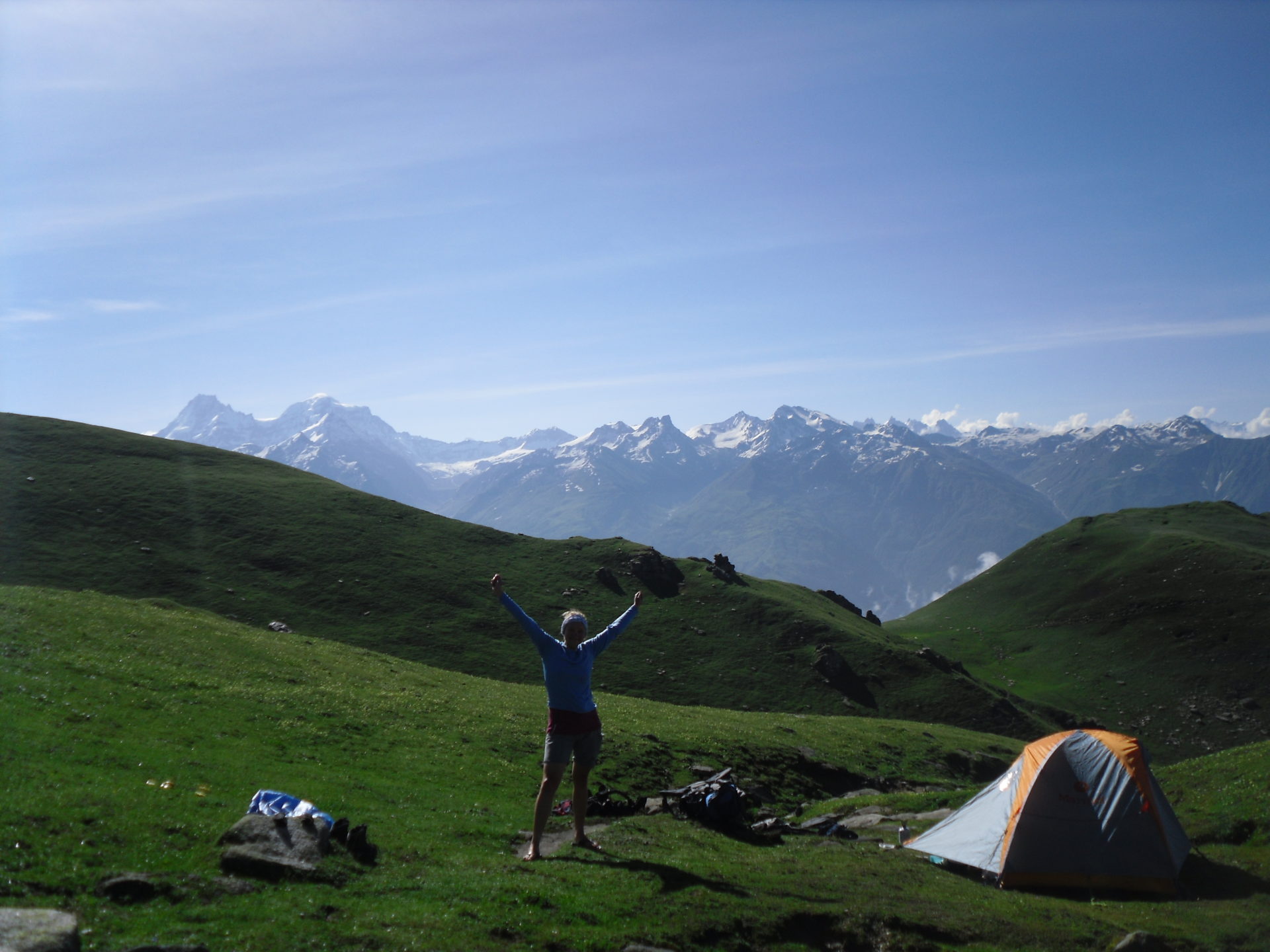
Rani Sui Trek 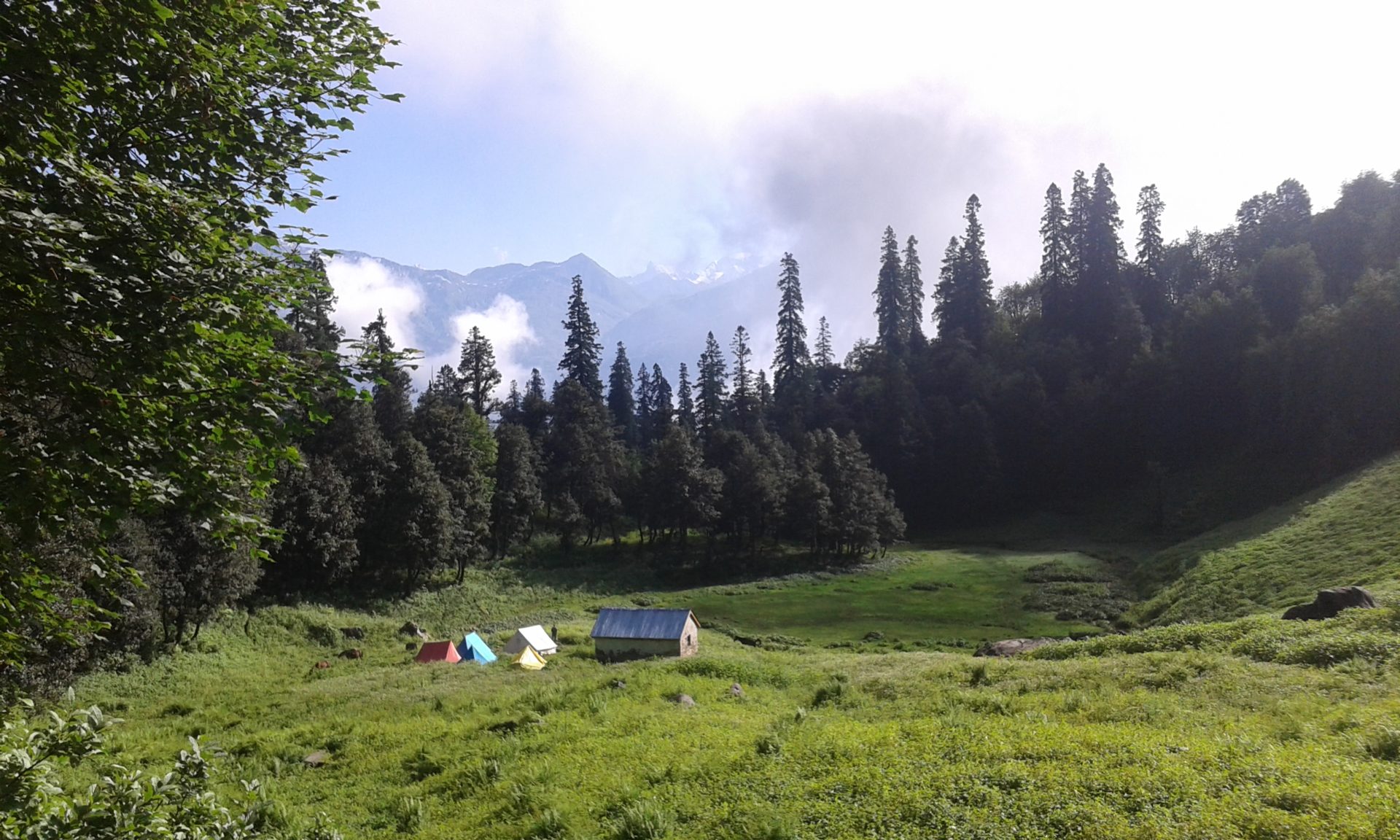
Our Camp in Lama Dug 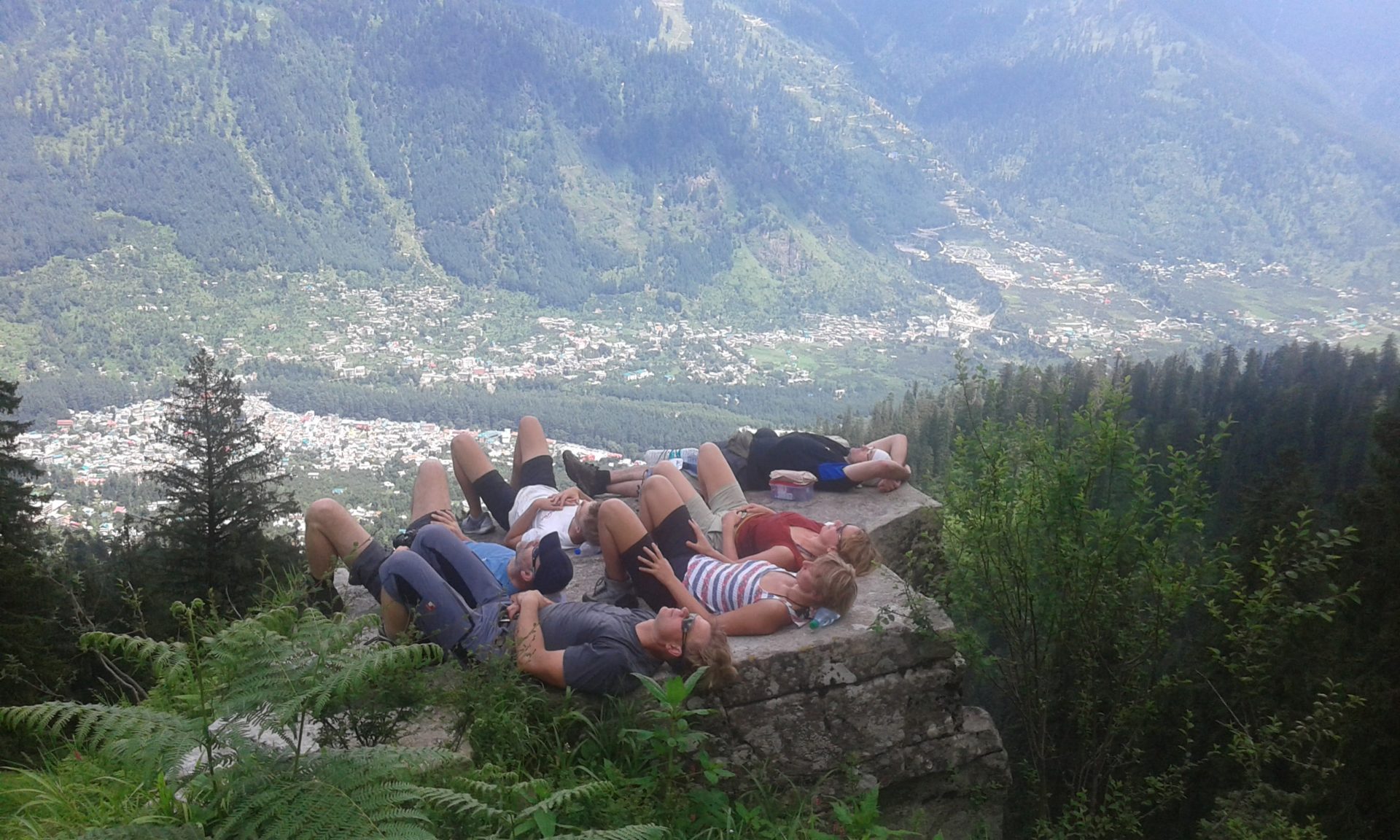
lunch break with view 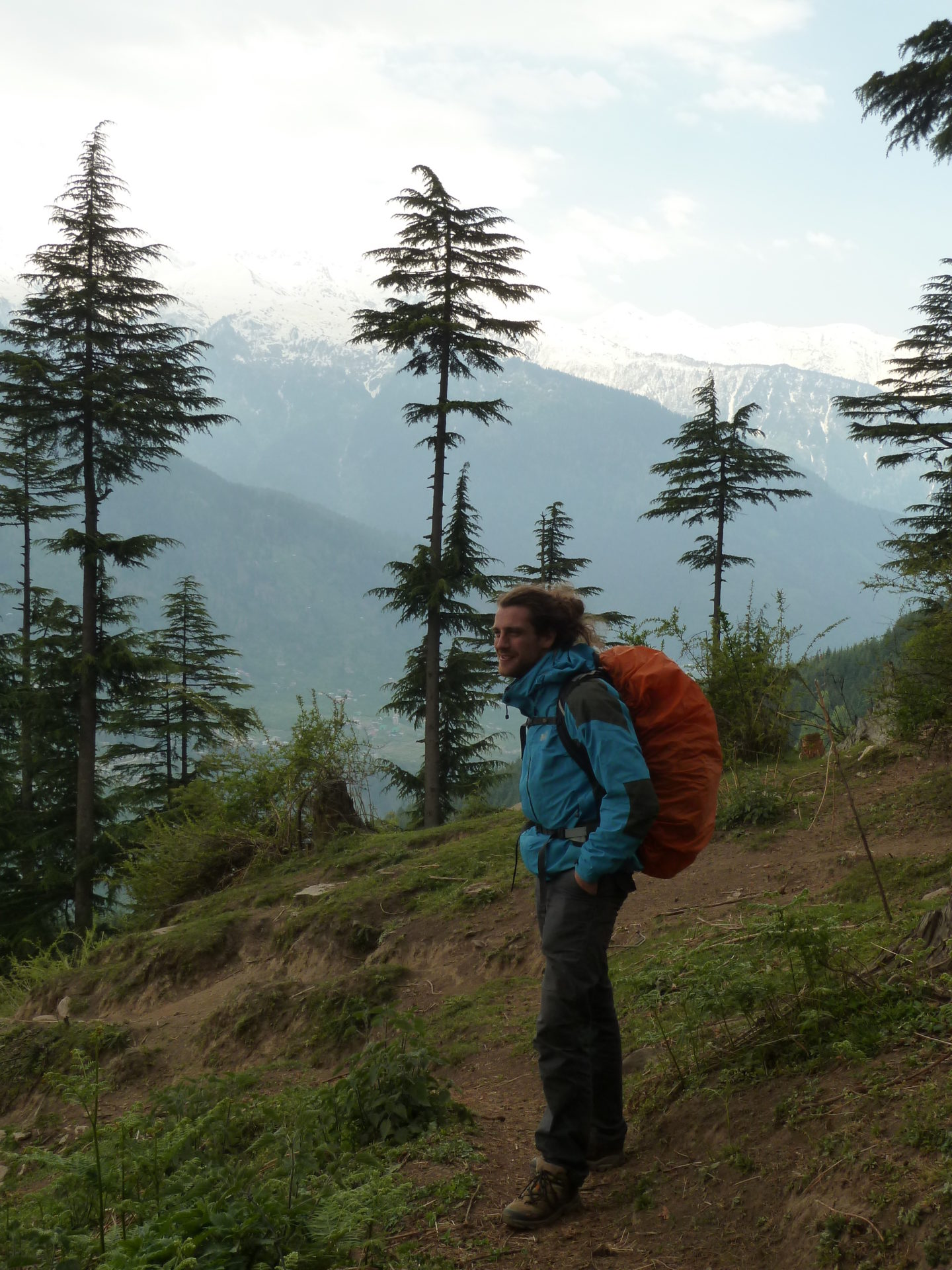
Rani Sui Trek 
Rani Sui Trek 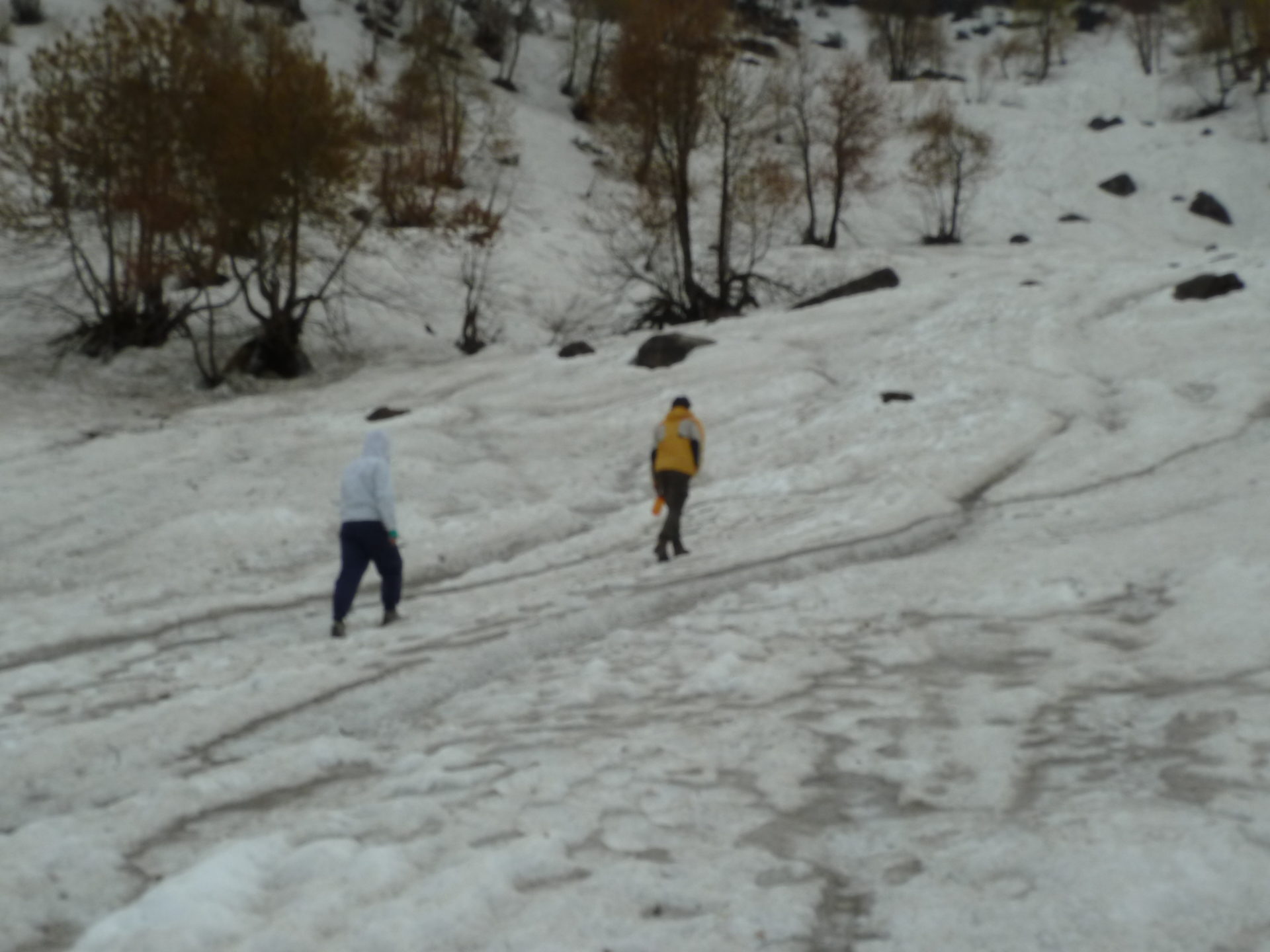
Rani Sui Trek early in the year 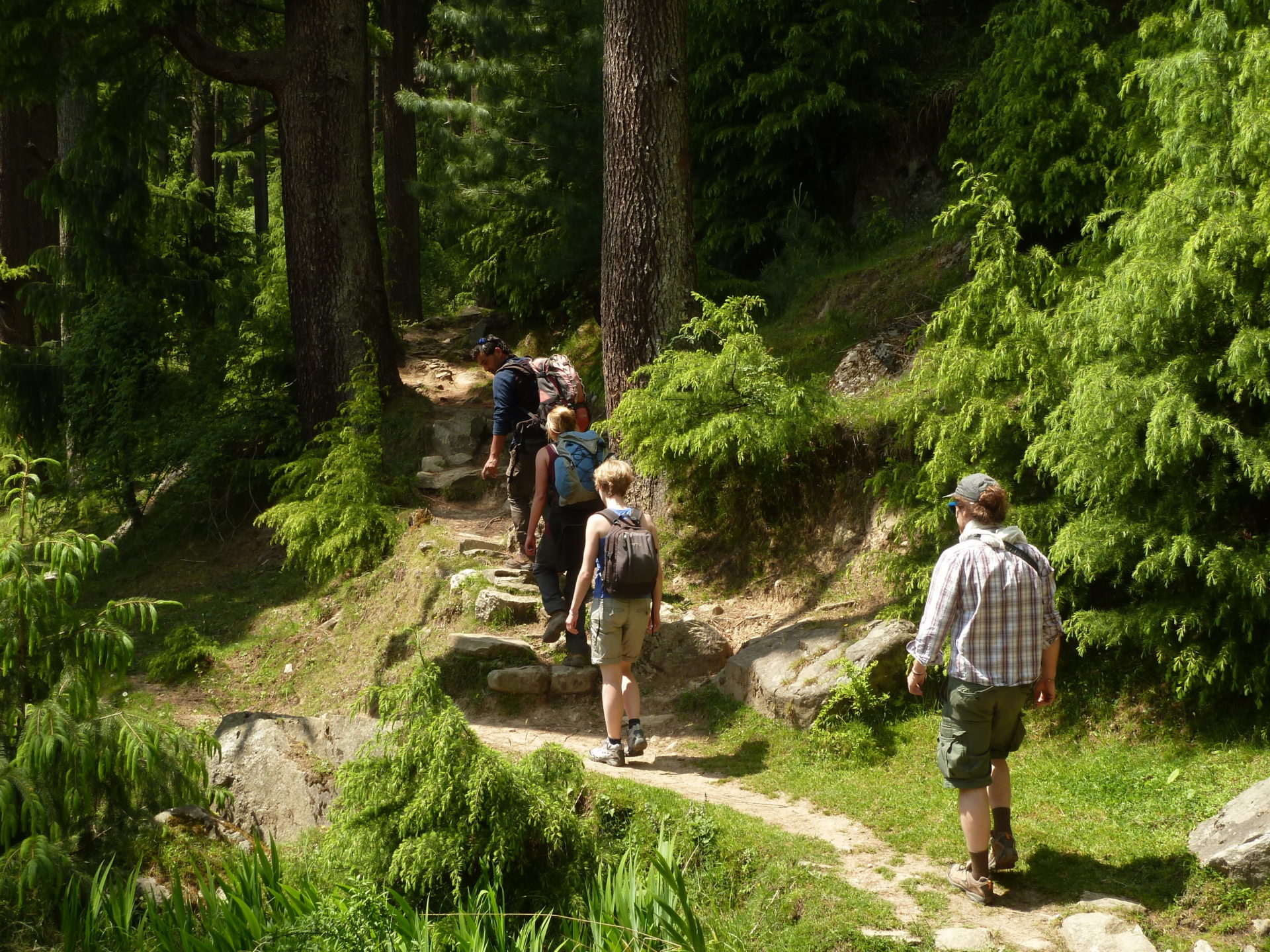
through the deep forest Lamadug 
Rani Sui Trek 
Rani Sui Trek 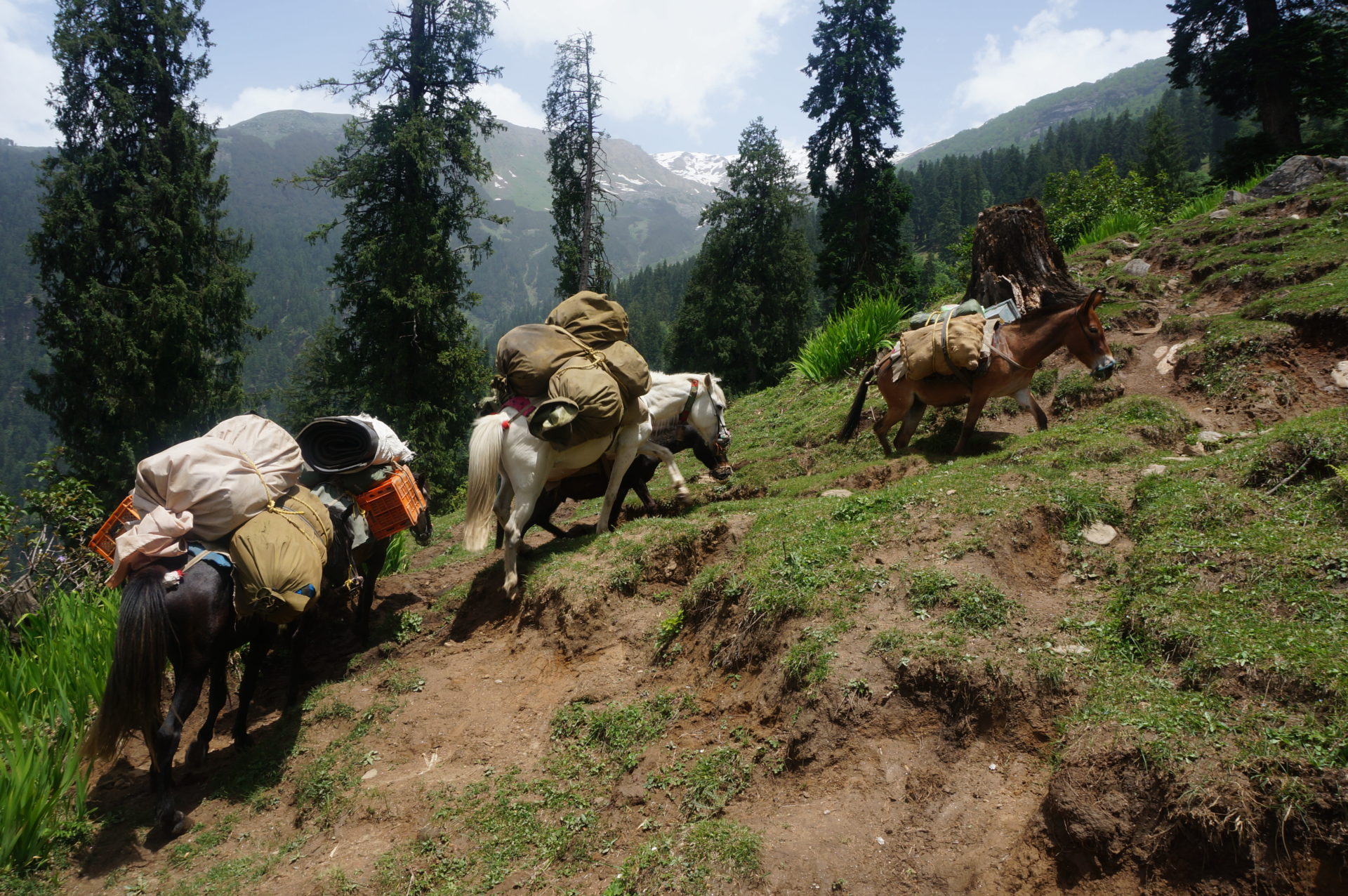
horses 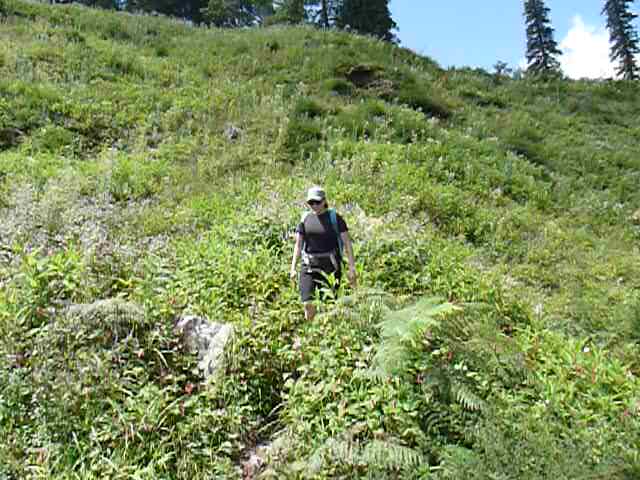
Rani Sui Trek 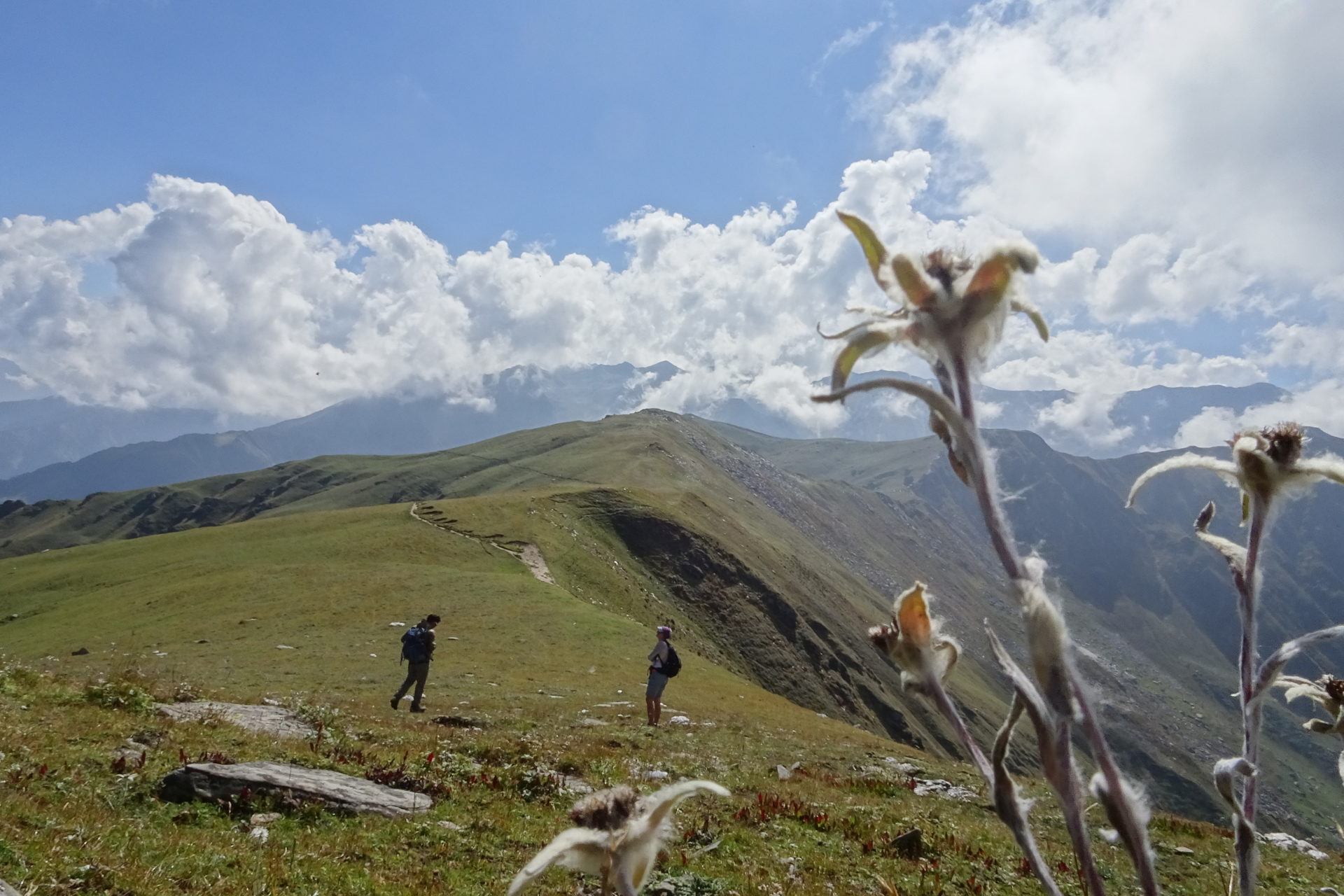
Rani Sui Trek 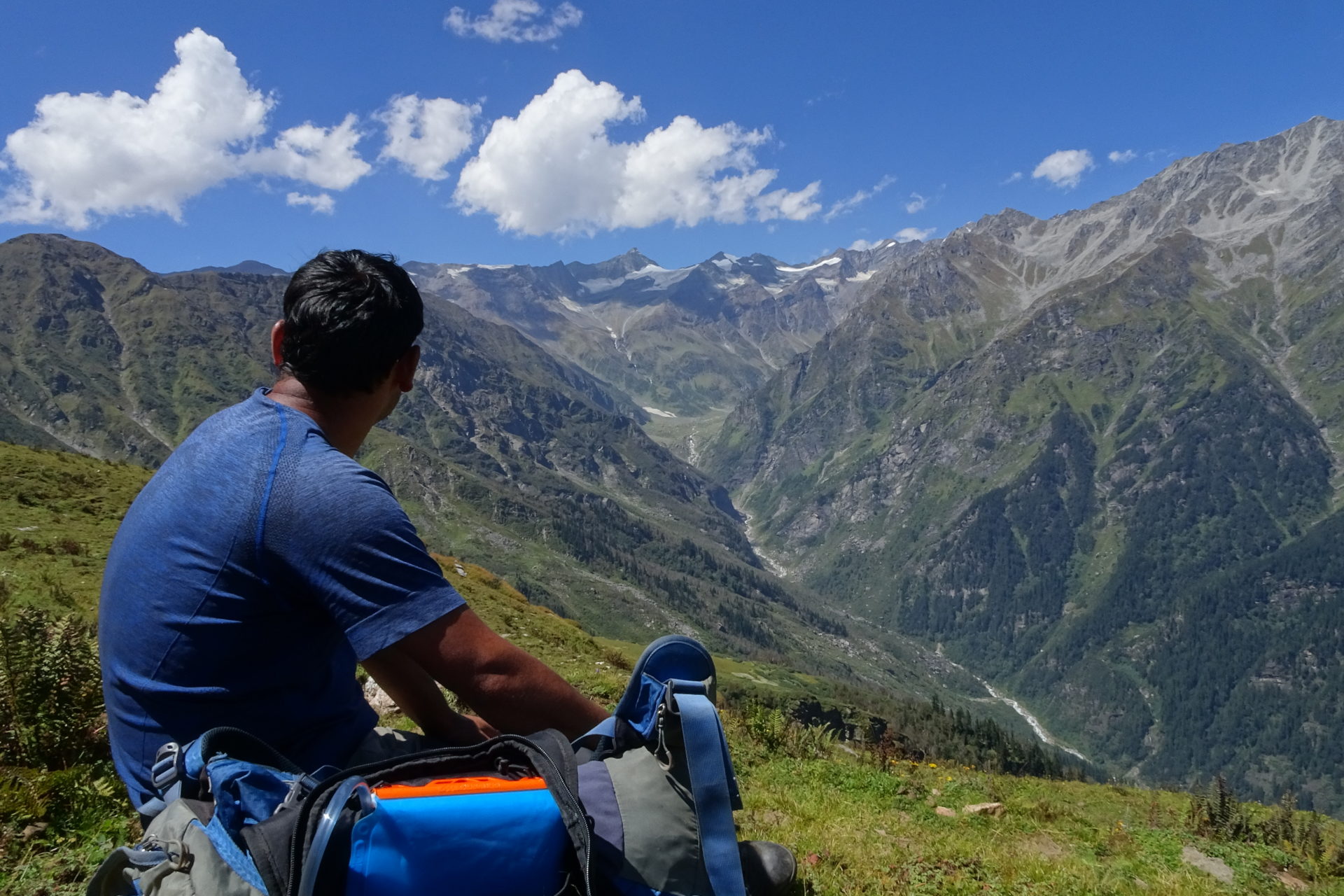
Rani Sui Trek
Prices and Dates
This trek is possible from April to December
From 2 Participants: 200 €/Person
For 2 days Trek only 150 €/Person
Tour Info
Requirements
Due to the steep ascent and descent, this trek is quite demanding, but also very short. Within 2 days, almost 2000 metres of altitude up to almost 4000 metres are covered. Now and then you will get out of breath.
Information about the Trekking Tours with Chalo! Travels
Mountain guide and trekking team
On all our treks we have at least one (for larger groups of 6 participants two) trained local mountain guide. Our mountain guides have all completed at least the Indian mountaineering training, many of them have also completed the advanced courses.
They are familiar with the trekking routes and know the terrain excellently. All our mountain guides speak English.
In addition, there is a local team consisting of a cook (if the group consists of only two participants, the mountain guide also takes over the tasks of the cook), helpers, horsemen with horses or Nepalese porters, depending on the type of trek.
All our team members have been working with us for years, are very friendly and always strive to provide our guests with a great trekking experience. Their English (besides of the Guide) is rather mediocre or non-existent, but this is not necessarily a hindrance to communicating with them.
Trekking Routes
The trekking routes are designed according the skills of our guests and are all feasible for a person with a good fitness level, unless otherwise mentioned. The daily routes are between five and eight hours long (with breaks) and an average increase of around 500-800 metres of altitude is completed.
In between, rivers may have to be crossed. The paths are partly well developed, but sometimes also almost non-existent. On our trekking routes there are hardly any villages in between, so we will take enough food for the whole tour.
On our treks we cross passes, snow or glaciers. On steep slopes, we have safety equipment with us.
Daily routine (Depending on the length and intensity of the trek, the times may vary)
7: 00 am Get up with Tea
7:30-8:30 am Breakfast
7:00-9:30 am Dismantling of the camp
8:00- 9:30 am Start Trek
1:00 pm Lunch on the way
3:00-5:00 pm Arrival at the camp and camp construction
3:30-5:30 pm Snacks
7:00 pm Dinner
Altitude and altitude sickness
Altitude sickness is a very important topic that should not be underestimated, especially during our trekking tours in the Indian Himalayas. At altitudes above 3500 m, our body has to slowly get used to the low air pressure, which also causes less oxygen to enter our lungs. The first signs of altitude sickness are headaches, which are accompanied by dizziness, nausea, insomnia and loss of appetite. It becomes problematic when water accumulates in the lungs and brain and edema occurs. Then only the immediate descent to lower altitudes will help. To prepare for the heights on our treks, we will either spend a few nights at high altitudes before the trek or slowly ascend during the trek to acclimatize. If we notice that there are problems with our guests (each person is otherwise able to acclimatize, regardless of age, gender and fitness level), it may happen that either the entire group or the concerned participant descends/returns with a team. In addition, it makes sense to take an emergency drug for altitude sickness. For this, it is best to consult the pharmacy or the travel doctor. For certain treks we will also have oxygen with us.
Luggage
Each trekking participant is responsible for his own clothes and personal belongings. Depending on the trek, we are either with horses or porters. If we have load horses, one bag per participant can be loaded onto the horse. In the case of treks with porters, all personal luggage must be carried independently. Tents, sleeping bags, mattresses and food are carried by our porters.
For trekking tours with horses, a day backpack with space for the lunchbox, a water bottle and warm overcoat clothing should be taken with you. Here to the complete packing list for our trekking tours.
Packing list for trekking tours
- sleeping bag at least -10°C
- large backpack or soft carrying bag so that the load animals can carry the luggage
- Small carrying backpack for the day approx. 30-40 l with rain protection
- flashlight/headlamp
- 2 refillable water bottles
- hiking poles
- passport and passport copy
- camera with spare battery and memory card
- headgear as sun protection
- Good Sunglasses
- cap
- Scarf, Buff
- Gloves
- wind-proof trekking pants
- trekking pants
- Functional Underwear Long
- hiking boots
- socks thick and thin
- sneakers, sandals and/or slats
- windbreaker
- Warm Jacket
- fleece sweater/jacket
- Tshirts
- sunscreen, lip balm min. Protection 40
- fat cream
- water purification tablets (boiled and filtered water is provided)
- own medications for headaches, nausea, digestive problems, colds)
- bubble patches and dressing material
- own hygiene articles
- Toilets Paper
- hand disinfection
Meals
During the trek there will be a vegetarian full catering. Water is either boiled or we have a water filter with us.
Breakfast (daily selection):
- Coffee/Tea
- Oatmeal porridge/muesli/cornflakes/Indian porridge
- Indian breakfast
- Sliced fruit/vegetables
Lunch (mostly lunchbox), sometimes warm in the camp
- Sandwiches/Indian (rice, chapati, vegetables)/potatoes
- Juices
- Chocolate
- Fruit
Snacks
- Tea/coffee
- Cookies
- French fries/Indian snacks
Soup
Dinner (depending on the length of the Trek mix of Indian/Chinese/Continental)
- Vegetable dish
- Lentil dish
- Rice/noodles
- Chapati
- Salad
- Dessert
Accommodation and camp
We have very comfortable and spacious two-man tents. Our mattresses are practical but simple if there are problems with sleeping on hard surfaces, please take your own mattress with you or order from us. Our sleeping bags are freshly washed and have a very good quality with comfort zone up to -5°C/extreme zone up to -20° C. It is recommended to bring personal indoor sleeping bags.
In addition, we have a spacious dining tent with tables and chairs, a kitchen tent for the team and a toilet tent. For treks up to 4 people, the kitchen tent can also act as a dining tent at the same time.
For trekking tours with porters, we will take our smaller, lighter tents with us and do without a toilet tent.
Weather
In the Himalayas, temperatures fluctuate widely. While it can get warm up to 25°C during the day and the sun is not only warming, but also very intense (sun protection is a must), it can also cool down significantly below the minus-grade at night, especially in the months end of September and October, as well as in June. There may also be weather changes with snow on the passes.





